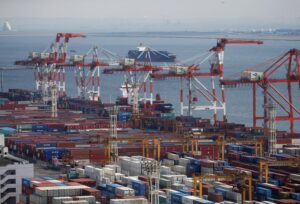China’s factory output disappoints, dashing hopes for speedy recovery

BEIJING (Reuters) -China’s factory output growth slowed and missed expectations in July, adding to a series of indicators that show the world’s second-largest economy is struggling to kick into a higher gear, even with recent government support.
Industrial output grew 5.1% from a year earlier, National Bureau of Statistics (NBS) data showed, slowing from the 5.3% pace in June and below expectations for a 5.2% increase in a Reuters poll of analysts.
In an upbeat contrast, the NBS’ monthly activity indicators showed retail sales, a gauge of consumption, rose 2.7% in July, quickening from a 2.0% increase in June and beating expectations for growth of 2.6%, a sign efforts to boost household spending were getting some traction.
However, analysts warn the broader outlook is still highly challenging for policymakers, suggesting more stimulus measures will be needed.
“The data shows that the economy has gotten off to a weak start in the second half of the year, and it is expected that the probability of replacing MLF with a RRR cut will increase, but key to maintaining 5% economic growth remains the arrival of fiscal spending,” said ANZ China market economist Xing Zhaopeng. He was referring to the People’s Bank of China’s medium-term lending facility and reserve requirement ratio.
On Thursday, the central bank injected cash through a short-term bond instrument and said it would conduct an MLF rollover later this month as it extends liquidity support to the financial system.
Chinese leaders last month signalled that they would give greater consideration to suggestions they turn to a new playbook and focus growth boosting efforts at consumers, rather than more funnelling more funds into infrastructure and manufacturing.
Calls for more growth boosting measures for the $19 trillion economy have dogged officials ever since a widely expected post-pandemic recovery failed to materialise in 2022.
While the government is still targetting growth of around 5% this year, analysts consider it increasingly likely that the world’s production powerhouse has entered a prolonged economic malaise similar to Japan in the 1990s.
Fixed asset investment expanded 3.6% in the first seven months of 2024 year-on-year, but also missed expectations for a 3.9% rise and also slowed from the 3.9% growth in the January to June period.

China’s central bank at a meeting earlier this month said it would step up financial support to the broader economy and efforts would be directed more at consumers to spur consumption.
But with domestic demand so weak and the outlook unclear, households and businesses are in no rush to borrow.





